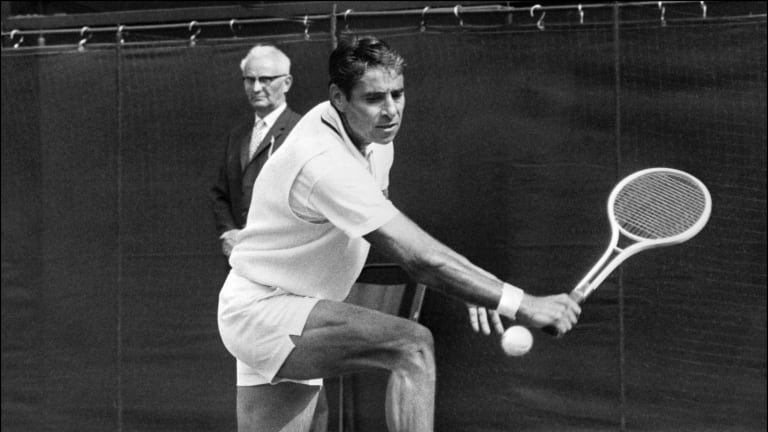Wimbledon
TBT, 1969 Wimbledon: The lion inside Pancho Gonzales comes out
By Jun 25, 2020Wimbledon
Wimbledon to replace line judges with electronic line calling from 2025
By Oct 09, 2024Wimbledon
The amazing journey of Henry Patten from IBM data logger to Wimbledon doubles champion
By Jul 16, 2024Wimbledon
Hsieh Su-Wei, Jan Zielinski win mixed doubles title at Wimbledon
By Jul 15, 2024Wimbledon
Why Wimbledon Endures
By Jul 15, 2024Wimbledon
Novak Djokovic seeks 2024 answers for Alcaraz and Sinner after great effort: 4 ATP Wimbledon takeaways
By Jul 14, 2024Wimbledon
Carlos Alcaraz is a champion establishing how high he will climb with latest Wimbledon title
By Jul 14, 2024Wimbledon
Nicolai Budkov Kjaer makes history in winning junior boys' Wimbledon title; Renata Jamrichova wins girls' title
By Jul 14, 2024Wimbledon
Carlos Alcaraz beats Novak Djokovic again in Wimbledon final for fourth Grand Slam title
By Jul 14, 2024Wimbledon
For Jasmine Paolini, Barbora Krejcikova was one forehand and one serve too good in the Wimbledon final
By Jul 13, 2024Wimbledon
TBT, 1969 Wimbledon: The lion inside Pancho Gonzales comes out
The roots of this Centre Court moment went back more than 20 years. At the end of 1949, Gonzales had turned pro—and thus been banned from such prestigious events, forcing him to play in dim-lit arenas, on surfaces that ranged from slick wood to cow dung.
Published Jun 25, 2020
Advertising

TBT, 1969 Wimbledon: The lion inside Pancho Gonzales comes out
© AFP via Getty Images
Advertising

TBT, 1969 Wimbledon: The lion inside Pancho Gonzales comes out